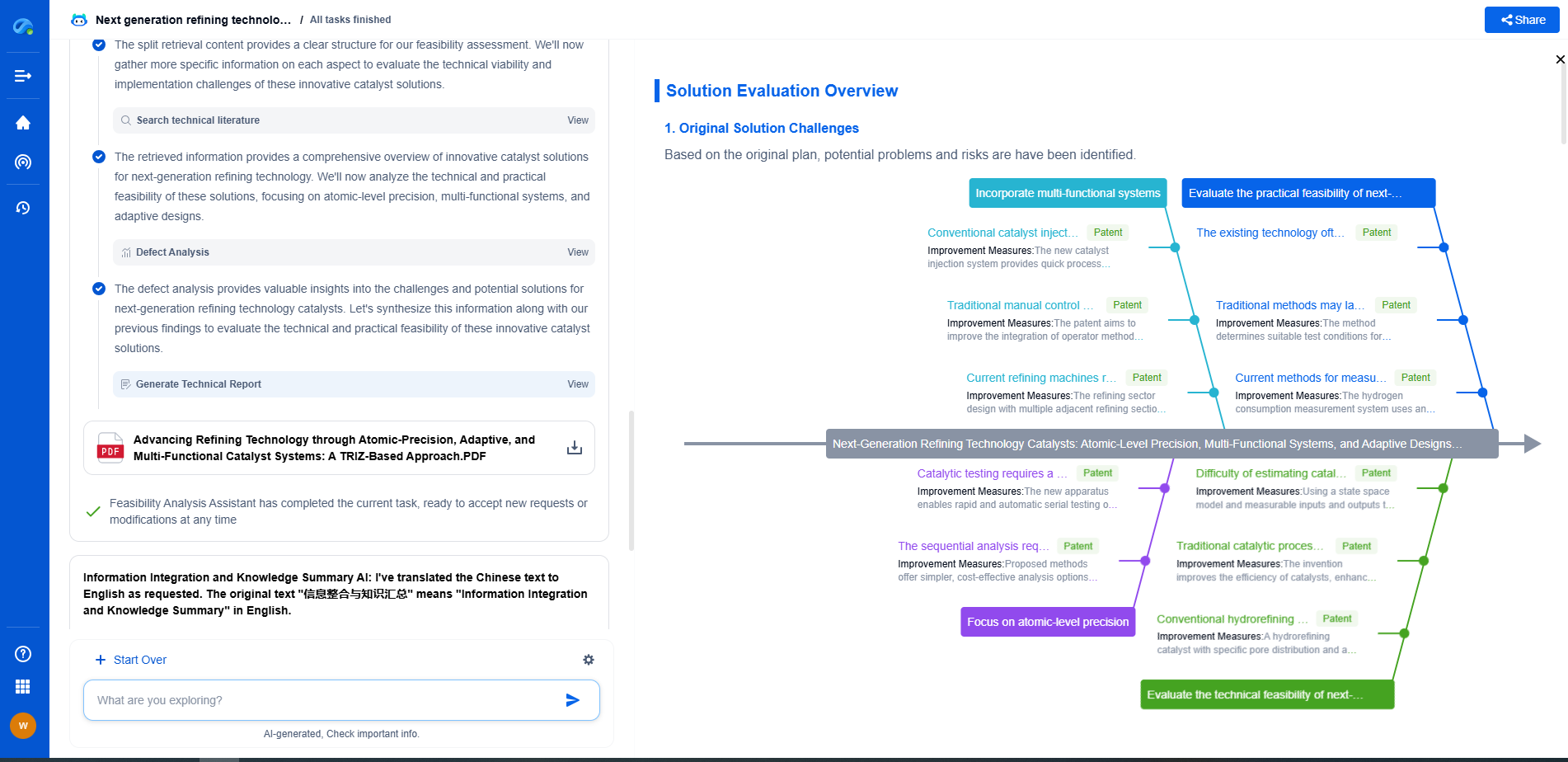How to Detect Rogue Base Stations in Real Time
JUL 7, 2025 |
Rogue base stations, often referred to as IMSI catchers or stingrays, pose a significant threat to network security and personal privacy. These malicious devices mimic legitimate cell towers to intercept mobile communications, track user location, and sometimes even inject harmful content. Detecting these rogue devices in real time is crucial for safeguarding sensitive information and ensuring secure communications. This blog explores various methods and technologies that can be employed to identify rogue base stations effectively.
Understanding How Rogue Base Stations Operate
To effectively detect rogue base stations, it's essential to understand their operating mechanisms. Typically, these devices exploit weaknesses in mobile network protocols, such as GSM, CDMA, and LTE. They work by broadcasting a stronger signal than legitimate towers, causing nearby mobile devices to connect to them instead. Once connected, the rogue base station can intercept calls, texts, and data sessions, often without the user realizing it.
Indicators of Rogue Base Station Activity
Identifying rogue base stations involves recognizing certain indicators of their presence. These may include sudden changes in network signal strength, unusual or unexpected SMS messages, discrepancies in phone bills, or degraded network performance. Additionally, frequent disconnections and reconnections to the network may suggest interference from a rogue device. Understanding these signs can aid in the early detection of malicious activity.
Technological Approaches for Detection
Several technological solutions can aid in detecting rogue base stations in real time:
1. Signal Analysis: Advanced signal monitoring tools can analyze the strength and frequency of signals from towers. Sudden and unexplained changes might indicate the presence of a rogue device.
2. Network Mapping: Continuously mapping the legitimate base stations in an area allows for easy identification of unauthorized devices. By comparing real-time data with the established map, any deviations can be flagged for further investigation.
3. Machine Learning Algorithms: Employing machine learning models can help predict and identify rogue behavior. These algorithms can analyze vast amounts of network data to spot anomalies indicative of rogue base stations.
4. Cryptographic Techniques: Utilizing cryptographic methods to authenticate base stations can prevent unauthorized devices from spoofing legitimate towers. Encryption ensures that only verified stations can communicate with mobile devices.
Challenges in Detection
Detecting rogue base stations in real time is not without its challenges. The primary difficulty lies in differentiating them from legitimate stations without disrupting normal service. Moreover, as mobile network protocols evolve, so do the techniques employed by rogue devices, requiring continuous updates to detection methods. Privacy concerns also need to be addressed, ensuring that detection systems do not infringe on user rights or collect personal data without consent.
Preventive Measures and Best Practices
In addition to detection, several preventive measures should be implemented to mitigate the risk of rogue base stations:
1. Regular Network Audits: Conducting periodic audits of network infrastructure can help identify vulnerabilities and unauthorized devices.
2. User Education: Informing users about the risks associated with rogue base stations and encouraging them to report suspicious activity can enhance collective security efforts.
3. Collaboration with Network Providers: Working closely with mobile operators can facilitate the sharing of information and resources aimed at detecting and disabling rogue devices.
Conclusion
Detecting rogue base stations is a complex but essential task in maintaining the security and privacy of mobile communications. By combining technological solutions with proactive measures, individuals and organizations can significantly reduce the threat posed by these malicious devices. As the telecommunications landscape continues to evolve, ongoing vigilance and adaptation are crucial in the fight against rogue base stations.
Empower Your Wireless Innovation with Patsnap Eureka
From 5G NR slicing to AI-driven RRM, today’s wireless communication networks are defined by unprecedented complexity and innovation velocity. Whether you’re optimizing handover reliability in ultra-dense networks, exploring mmWave propagation challenges, or analyzing patents for O-RAN interfaces, speed and precision in your R&D and IP workflows are more critical than ever.
Patsnap Eureka, our intelligent AI assistant built for R&D professionals in high-tech sectors, empowers you with real-time expert-level analysis, technology roadmap exploration, and strategic mapping of core patents—all within a seamless, user-friendly interface.
Whether you work in network architecture, protocol design, antenna systems, or spectrum engineering, Patsnap Eureka brings you the intelligence to make faster decisions, uncover novel ideas, and protect what’s next.
🚀 Try Patsnap Eureka today and see how it accelerates wireless communication R&D—one intelligent insight at a time.
- R&D
- Intellectual Property
- Life Sciences
- Materials
- Tech Scout
- Unparalleled Data Quality
- Higher Quality Content
- 60% Fewer Hallucinations
Browse by: Latest US Patents, China's latest patents, Technical Efficacy Thesaurus, Application Domain, Technology Topic, Popular Technical Reports.
© 2025 PatSnap. All rights reserved.Legal|Privacy policy|Modern Slavery Act Transparency Statement|Sitemap|About US| Contact US: help@patsnap.com

